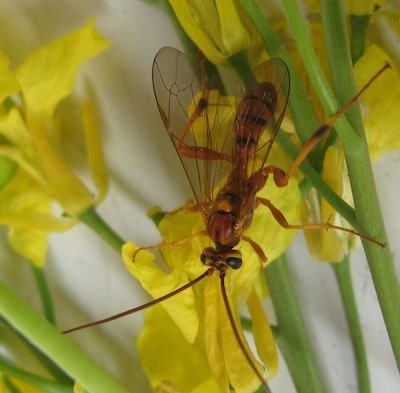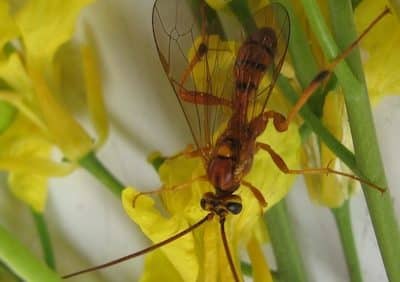Pod-eating insects — including bertha armyworm, lygus and diamondback moth larvae — are at low levels in general in 2016. The biggest factors regulating insect populations are (1) weather, (2) natural enemies and (3) competing food sources. Each is working in favour of lower insect pest pressure this year.
Weather. Wet weather can increase insect diseases and pounding rains can knock worms and bugs to the ground where they drown or are eaten by beetles and other beneficials. Heavy rainfall can be a major mortality factor for eggs and early instars of diamondback moth, for example. Winter weather also comes into play. For bertha armyworm, ample snow cover will reduce winter kill.
Natural enemies. Entomologists have noted a lot of parasitoids of bertha armyworm in the last couple of years, so that will be helping. Beneficials are also helping manage diamondback moth. Read more about natural control of DBM in this article.

Competing food sources. When there is good crop and non-crop plant growth, this can reduce overall economic pressure from generalist insects such as grasshoppers and lygus bugs. In that case, their numbers may be the same as always but they have a lot more to eat so we don’t notice them.
Low arrival numbers. For diamondback moth, the population that blew in for 2016 was not too high, in general, which would be a fourth factor.
Hot spots can still flare up. Overall the trap counts for bertha armyworm suggest lower risk in most areas, although Manitoba has several traps in the uncertain risk and one (Durban) at moderate risk.

